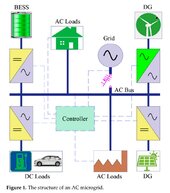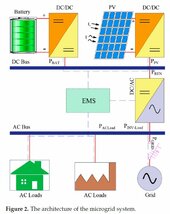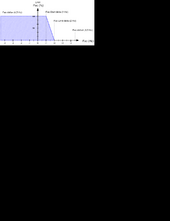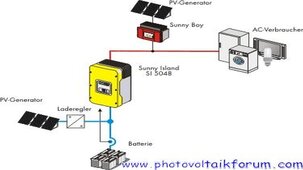You are using an out of date browser. It may not display this or other websites correctly.
You should upgrade or use an alternative browser.
You should upgrade or use an alternative browser.
Grid Forming Inverters
- Thread starter magnet creek
- Start date
timselectric
If I can do it, you can do it.
- Joined
- Feb 5, 2022
- Messages
- 18,717
An inverter turns DC power into AC power.Grid-forming inverters should be installed in DC side or AC side?
They are installed between the two.
So we don't have DC/DC or AC/AC inverters?An inverter turns DC power into AC power.
They are installed between the two.
timselectric
If I can do it, you can do it.
- Joined
- Feb 5, 2022
- Messages
- 18,717
No those would be converters and transformers.So we don't have DC/DC or AC/AC inverters?
An "inverter" inverts (reverses) DC current into an alternating flow of current.
DC = direct current
AC = alternating current
RCinFLA
Solar Wizard
- Joined
- Jun 21, 2020
- Messages
- 3,565
The difference is just whom is in charge of being AC phase master and who is AC phase following slave.
A battery powered hybrid inverter can switch between being a slave to grid phase or standalone master for off grid AC coupled PV GT inverters.
For hybrid battery powered inverter, when AC input pass-through relay is closed it is a slave. When pass-through relay is open the inverter is its own AC phase master.
A battery powered hybrid inverter can switch between being a slave to grid phase or standalone master for off grid AC coupled PV GT inverters.
For hybrid battery powered inverter, when AC input pass-through relay is closed it is a slave. When pass-through relay is open the inverter is its own AC phase master.
wpns
Solar Joules are catch and release
Yet another interesting article, including analysis of Hawaii grid collapse avoidance using grid-supporting features of grid-scale inverter/battery systems:
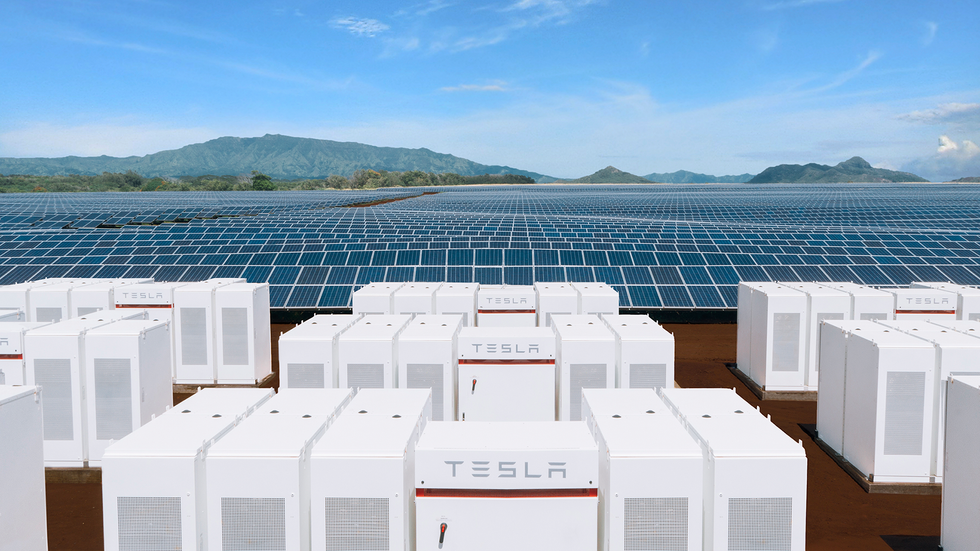
 spectrum.ieee.org
spectrum.ieee.org
I’m seeing references in the EG4 18Kpv settings that might be response curves you could have programmed in to support the grid but they aren’t relevant to me, as my grid is so poorly managed that my primary focus is getting completely off it.
Is it possible for residential inverters to operate in a grid-support function (I’ll avoid grid forming and following terminology as it just adds confusion)? Or would this be a “virtual power plant” kind of thing that would probably require a middleman to sit between the poco and the homeowner?
Nice to see a scientific analysis of grid stability, I hadn’t considered rotational inertia of the grid-coupled generators as part of the legacy grid stability equation. Emulating that in software securely and reliably will be very important (SCADA attacks anyone?)

Getting the Grid to Net Zero
Grid-forming inverters will take us to 100 percent renewable energy
 spectrum.ieee.org
spectrum.ieee.org
I’m seeing references in the EG4 18Kpv settings that might be response curves you could have programmed in to support the grid but they aren’t relevant to me, as my grid is so poorly managed that my primary focus is getting completely off it.
Is it possible for residential inverters to operate in a grid-support function (I’ll avoid grid forming and following terminology as it just adds confusion)? Or would this be a “virtual power plant” kind of thing that would probably require a middleman to sit between the poco and the homeowner?
Nice to see a scientific analysis of grid stability, I hadn’t considered rotational inertia of the grid-coupled generators as part of the legacy grid stability equation. Emulating that in software securely and reliably will be very important (SCADA attacks anyone?)
Last edited:
The controller is what forms your micro grid. It also controls the generation of all sources by increasing/decreasing the frequency slightly to let them know what to do. No doubt others know more on this topic. The only setup I know of like that is one that involves a Victron Multiplus II as a controller and the battery inverter/charger in one. I think the advantage of this is that you need at least one device on this micro grid that can respond to demand/oversupply much quicker than what it takes to measure the frequency of the AC. The Multiplus being the master and having a battery it can use as a source/sink can do that to stabilise the microgrid even if it takes time to spin other sources up or down.My another question is control of microgrid. If these inverters can control the voltage and frequency, why do we need to add another controller for microgrid? The figure below shows a separate controller in addition to the inverters.
View attachment 210244
RCinFLA
Solar Wizard
- Joined
- Jun 21, 2020
- Messages
- 3,565
Most hybrid inverter do.Do we have multi-mode inverter for grid-connection?
I mean an inverter with grid-forming and grid-following mode.
Do you know any brand for these type of inverters?
- Pass-through relay open, grid forming.
- Pass-through relay closed, grid following.
Closing pass-through relay is based on first detecting AC voltage present on AC input then aligning inverter's voltage/freq/phase (becoming a slave) before closing pass-through relay.
Some newer systems place the grid disconnect relay external from hybrid inverter, between utility input lines and main panel and allow multiple hybrid inverters and/or PV GT inverters to provide AC feed power directly to main panel. Again, pass-through relay open means grid forming, with one of the units feeding panel being reference master.
Providing power contribution does not mean a source is phase master, although it can help lower micro-grid mastering impedance.
Thanks. We call this controller energy management system (EMS). Right?The controller is what forms your micro grid. It also controls the generation of all sources by increasing/decreasing the frequency slightly to let them know what to do. No doubt others know more on this topic. The only setup I know of like that is one that involves a Victron Multiplus II as a controller and the battery inverter/charger in one. I think the advantage of this is that you need at least one device on this micro grid that can respond to demand/oversupply much quicker than what it takes to measure the frequency of the AC. The Multiplus being the master and having a battery it can use as a source/sink can do that to stabilise the microgrid even if it takes time to spin other sources up or down.
Which type of control algorithm/strategy is used for this controller? (i.e., PID, adaptive controller, ...).
If this can be used for both inverter/charger for battery/PV and also for energy management system as a controller, how it can manage the microgrid when the main grid is outage?
Last edited:
Thanks. It was very informative.Most hybrid inverter do.
- Pass-through relay open, grid forming.
- Pass-through relay closed, grid following.
Closing pass-through relay is based on first detecting AC voltage present on AC input then aligning inverter's voltage/freq/phase (becoming a slave) before closing pass-through relay.
Some newer systems place the grid disconnect relay external from hybrid inverter, between utility input lines and main panel and allow multiple hybrid inverters and/or PV GT inverters to provide AC feed power directly to main panel. Again, pass-through relay open means grid forming, with one of the units feeding panel being reference master.
Providing power contribution does not mean a source is phase master, although it can help lower micro-grid mastering impedance.
Unit feeding panel means our distributed generation (DG)? Like solar panel or wind turbine?
So, if grid-forming uses one of the units feeding panel for reference, how it can detect this reference is accurate for our target (voltage and frequency)?
Unfortunately I have no idea. I doubt the victron Multiplus II manual I read specified it. I seriously considered this setup for myself for a while, only deciding against it based on price.Thanks. Which type of control algorithm/strategy is used for this controller? (i.e., PID, adaptive controller, ...)
If the main grid is outage, what's your suggestion about control strategy to maintain stable voltage and frequency?Most hybrid inverter do.
- Pass-through relay open, grid forming.
- Pass-through relay closed, grid following.
Closing pass-through relay is based on first detecting AC voltage present on AC input then aligning inverter's voltage/freq/phase (becoming a slave) before closing pass-through relay.
Some newer systems place the grid disconnect relay external from hybrid inverter, between utility input lines and main panel and allow multiple hybrid inverters and/or PV GT inverters to provide AC feed power directly to main panel. Again, pass-through relay open means grid forming, with one of the units feeding panel being reference master.
Providing power contribution does not mean a source is phase master, although it can help lower micro-grid mastering impedance.
houseofancients
Solar Wizard
The inverter will take care of thatIf the main grid is outage, what's your suggestion about control strategy to maintain stable voltage and frequency?
Thanks. But beside the inverters, we need to have separate controller (energy management system) to control and manage the power flow. Like the following picture.The inverter will take care of that
Attachments
So, it works like EMS. Right?Depends upon the inverter used, my SMA Sunny Islands include the controller and use frequency shift to control output of connected PV inverters.
Is the control strategy "droop control" in it?
What's your control strategy when you face with grid outage? This controller can manage it?
Last edited:
I couldn't find Early Sunny Islands datasheet. Could you please share the link?Early Sunny Islands
Similar threads
- Replies
- 2
- Views
- 146
- Replies
- 2
- Views
- 185
- Replies
- 14
- Views
- 570
- Replies
- 1
- Views
- 262



